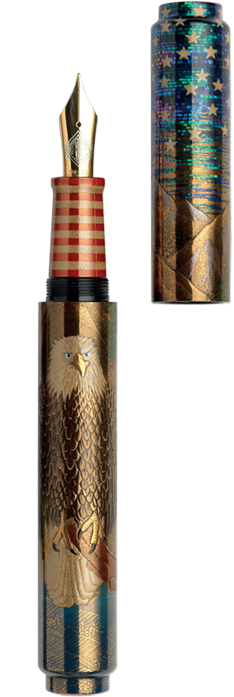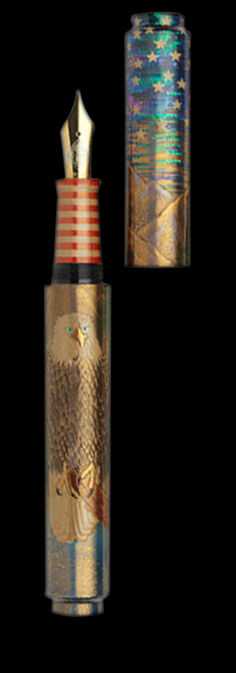
An Urushi tree takes about 12 to 15 years to mature for commercial purposes. For only a few months during the year, the sap can be gathered, with every tree producing at best, only about a cupful of sap (about 150 grams), from which the celebrated Urushi lacquer is made. And then the tree is chopped down, to make space for planting trees that will bear the famed sap, more than a decade into the future. One must remember here that Japan, the home of Urushi, is an island, and because of the climatic conditions needed by the tree for it to thrive, it is in the heavily wooded areas of Iwate prefecture in North Japan that it is harvested.
It will also not be out of place to mention here that Japan produces only a minuscule amount (some suggest, about 2 percent) of the Urushi it uses, the rest being imported from other countries, primarily China. Japanese Urushi is high in Urushiol content, which is responsible for imparting hardness to the lacquer, which explains the exceptional durability and deep luster, of this Japanese art form that had originally taken the breath away of the world.
And that is only the lacquer that is used in this art form to attain union with the universe, nirvana if you may. For Urushi art is not only repetitive and time-consuming, back-breaking even; it is in fact, an extension of the Japanese psyche in its eternal search for perfection. The various genres that comprise the spectrum that is loosely termed as Urushi are in themselves as diverse and evolved as can be, successive generations of Master artists from different geographical locations in Japan, having given it their life-long, even spiritual dedication, to elevate their artistry to the unbelievable levels that have been attained. Urushi pens, as is often said by connoisseurs, are therefore to be felt, the senses celebrating their ethereality, as opposed to being merely possessed or even used.
Togidashi-Taka-Maki-e, for example, has a raised surface while Chinkin is all about motifs being curved into the lacquered surface with special chisels, filling them with gold powders before sealing it off with Urushi lacquer coats. Both techniques provide delicate, yet multi-dimensional aspects, though the approach to creating them is literally from opposite directions. Similarly, Raden which uses mother-of-pearl inlays, or even the most basic Maki-e pens are literally odes to perfection. What needs to be stressed here is that the motifs are not painted, but are arrived at by sprinkling gold and other precious powders, which make the final products that much more awe-inspiring. In Chinkin for example, as the designs are curved, there is no room for mistakes with every single curve demanding the complete and total attention of the creator. This is precisely what transports the intricate detailing of the pieces to orbits beyond the comprehension of the common mortal.
One entity that has been consistently expanding the horizons of the timeless Urushi lacquering / Maki-e art is AP Limited Editions. Way back in 2016, AP Limited Editions had created a tribute to the Great American Bald Eagle which was, predictably sold out within a matter of days and is still talked about as a masterpiece in terms of sheer creativity. What makes these pieces defining examples of the art form is the fact that they are an amalgamation of different techniques that have been blended in a manner that challenges the very pillars of originality.

Shishiai Togidashi Maki-e, perhaps the most intricate and taxing combination of Taka (raised) Maki-e and Togidashi (burnished) Maki-e was used to attain and the highest level of Maki-e requiring unbelievable levels of skill. Urushi lacquer and charcoal powder were used to create the main design in high relief. Thereafter the raised elements were smoothened to a gradient and
burnished to a uniform luster. This technique is often used in landscapes where such elements as rocks, clouds, or mountains are featured in a raised design that slopes gently to a flattened base.
The Eagle’s head and body were created using Taka Maki-e, the raised Maki-e technique to show a two-dimensional view. The eyes of the Eagle were inlaid with Yakougai (Turban Shell). The feathers were drawn and the ultra-realistic effect was achieved by using a very fine brush covered with Urushi to draw fine lines which were then sprinkled over with Gold and Silver powders. This process is known as Tsukegaki. Some of the feathers outlines that were drawn were not covered with Maki-e powders deliberately to blend into the overall scheme of things. This process is called Kaki-wari.
The pens fired the imagination of the discerning not only because of the main motif that was created but also because of the equally stunning, detailed background. The Sky for example was created by the expert use of very thinly sliced Abalone Shell pieces, incorporating the best of the Raden art form. These pieces were painstakingly attached one after the other to fit the curved surface of the pen. The 50-odd stars that bedecked the sky were created by the controlled use of Platinum powder and white Urushi lacquer. Similarly, the raised mountains on the horizon were crafted by using the raised Maki-e process of Taka Maki-e, which involves a backbreaking process in which the base is created with the application of very fine charcoal powder and Urushi lacquer. This is repeatedly dried and scraped with charcoal before the final Urushi coats are applied on the entire surface. Gold powder is sprinkled for a heightened effect. The snow on the mountains was achieved with Platinum powder.

The spirit behind AP Limited Editions is Anuj Poddar who originally hails from Kolkata. Most of their pens, however, are created by master craftsmen from Japan – some of the best in their respective fields – which explains not only the critical acclaim that borders on reverence but also the commercial success of AP Limited Edition creations.
For More information: https://aplimitededitions.com/
